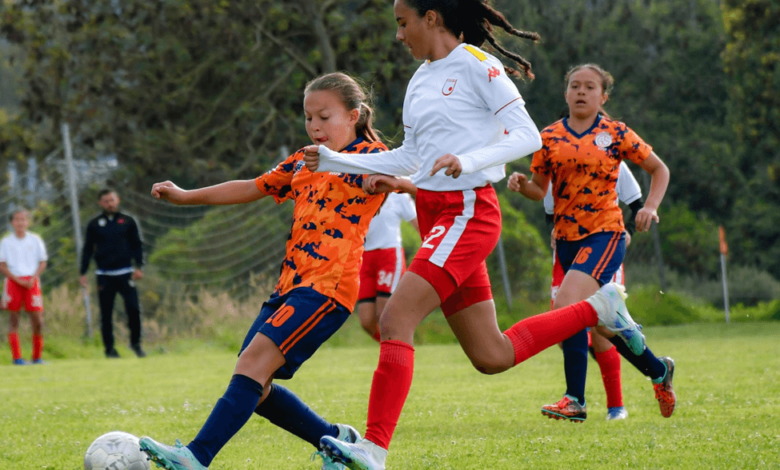13 Ways Physical Education Can Enhance Learning

The significance of physical education in the academic environment is often underestimated. While the focus of education predominantly lies in intellectual development, incorporating physical activity into the curriculum can yield substantial benefits for students. Physical education supports physical well-being and also enhances cognitive functions, emotional stability, and social skills. This article talks about the many ways physical education can boost learning capabilities, demonstrating that a well-rounded education extends beyond the traditional classroom setting.
- Enhances Focus and Attention
Regular physical activity is key to improving students’ focus and attention span. Engaging in sports or exercise routines requires concentration and mental involvement. This discipline of focusing on physical tasks trains the brain to maintain attention, a skill that is directly transferable to academic tasks. Students who participate in physical education are often better equipped to stay attentive during lectures and are less prone to distractions, leading to a more effective learning process.
- Reduces Stress and Anxiety
The academic journey can often be stressful, with high expectations and workload leading to increased anxiety among students. Physical education serves as a natural stress reliever, releasing endorphins that reduce the perception of pain and trigger positive feelings in the body. These exercises provide a mental break from studies, helping students return to their academic tasks with reduced stress levels and a refreshed mind.
- Benefits of Combining STEM and Sports
Integrating sports into a middle school STEM curriculum can significantly enhance learning experiences, offering a multitude of benefits. This innovative approach bridges the gap between theoretical knowledge and practical application, making STEM subjects more relatable and engaging for students. By applying scientific concepts to sports, students gain a deeper understanding of principles like physics and biomechanics in a real-world context. It also promotes active learning, encouraging students to experiment, hypothesize, and problem-solve in dynamic ways.
- Boosts Brain Function
Physical activity serves as a powerful stimulant for brain health. Regular exercise increases blood flow to the brain, thereby enhancing various cognitive functions crucial for learning. Studies have shown that students who participate in physical education exhibit improved memory, heightened concentration, and better problem-solving skills, all of which are vital for excelling in science, technology, engineering, and mathematics. This neurological boost is essential for academic success, as it enhances students’ ability to absorb, process, and effectively apply new information in these complex subject areas.
- Improves Mood and Mental Health
Physical education plays a pivotal role in enhancing students’ mood and overall mental health. Exercise stimulates the production of neurotransmitters like serotonin and dopamine, which are responsible for feelings of happiness and well-being. A positive mood is conducive to learning, as students are more likely to engage with the material, participate in discussions, and collaborate with peers when they feel mentally healthy and happy.
- Encourages Healthy Lifestyle Habits
Integrating physical education into the academic curriculum instills healthy lifestyle habits from a young age. Regular physical activity teaches students about the importance of maintaining their physical health and the role it plays in their overall well-being and academic performance. These habits, once formed in school, often carry into adulthood, leading to a healthier and more balanced lifestyle.
- Develops Teamwork and Social Skills
Physical education often involves team sports and group activities, which are excellent for developing teamwork and social skills. Participating in team sports requires communication, cooperation, and an understanding of group dynamics. These experiences teach students how to work effectively in a team setting, resolve conflicts, and support their teammates. These skills are essential for a harmonious school environment and are also highly valued in professional settings.
- Fosters Discipline and Persistence
Regular participation in sports and physical activities requires commitment and the ability to push through challenges. This discipline, once developed, transcends the gym or playing field. Students learn the importance of consistent effort and perseverance, qualities that are crucial for overcoming academic obstacles and achieving long-term educational goals.
- Promotes Better Sleep Patterns
Regular physical activity has been shown to improve the quality of sleep, which is essential for the learning process. Adequate sleep enhances memory consolidation, cognitive function, and mood—all critical factors for effective learning. Students who engage in consistent physical activity often experience deeper and more restful sleep, leaving them more alert and ready to learn during the day.
- Increases Self-Esteem and Confidence
Achieving physical milestones, whether it’s mastering a new sport or improving fitness levels, fosters a sense of accomplishment. This boost in self-confidence translates into the classroom, where students are more likely to participate in discussions, take on leadership roles, and approach new challenges with a positive mindset. The confidence gained from physical achievements empowers students to tackle academic challenges with the same determination.
- Enhances Creativity
Physical education also plays a role in enhancing creativity. Engaging in sports and physical activities requires quick thinking, problem-solving, and adaptability. These dynamic situations encourage creative thinking and innovative problem-solving skills. Students who regularly participate in physical education often bring this creativity to their academic work, finding unique solutions to problems and thinking outside the box.
- Provides Kinesthetic Learning Opportunities
Kinesthetic learning, or learning through physical activity, is an essential mode of education for many students. Physical education offers these learners the opportunity to engage with material in a hands-on, movement-oriented way. This can be particularly beneficial for complex subjects where physical engagement can aid in understanding abstract concepts. By catering to different learning styles, physical education ensures a more inclusive and effective educational environment.
- Integrates Practical Health Education
Physical education is also an opportunity to integrate practical health education into students’ learning. Lessons on nutrition, the importance of regular exercise, and healthy lifestyle choices are vital components of physical education. This knowledge helps students make informed decisions about their health and well-being, leading to a more balanced lifestyle that supports their academic endeavors.
Conclusion
The numerous benefits of physical education extend well beyond the gymnasium or sports field. Its impact on the learning process is profound and multifaceted, enhancing students’ cognitive functions, mental health, social skills, and overall well-being. Physical education cultivates discipline, persistence, and confidence, attributes that are essential in academic and personal development.
It’s clear that physical education is a vital component of a comprehensive education system. Its role in enhancing learning is undeniable, offering students the tools they need not only to succeed academically but also to lead healthy, balanced lives. By acknowledging and embracing the holistic impact of physical education, educators and students alike can maximize the potential of their students.



